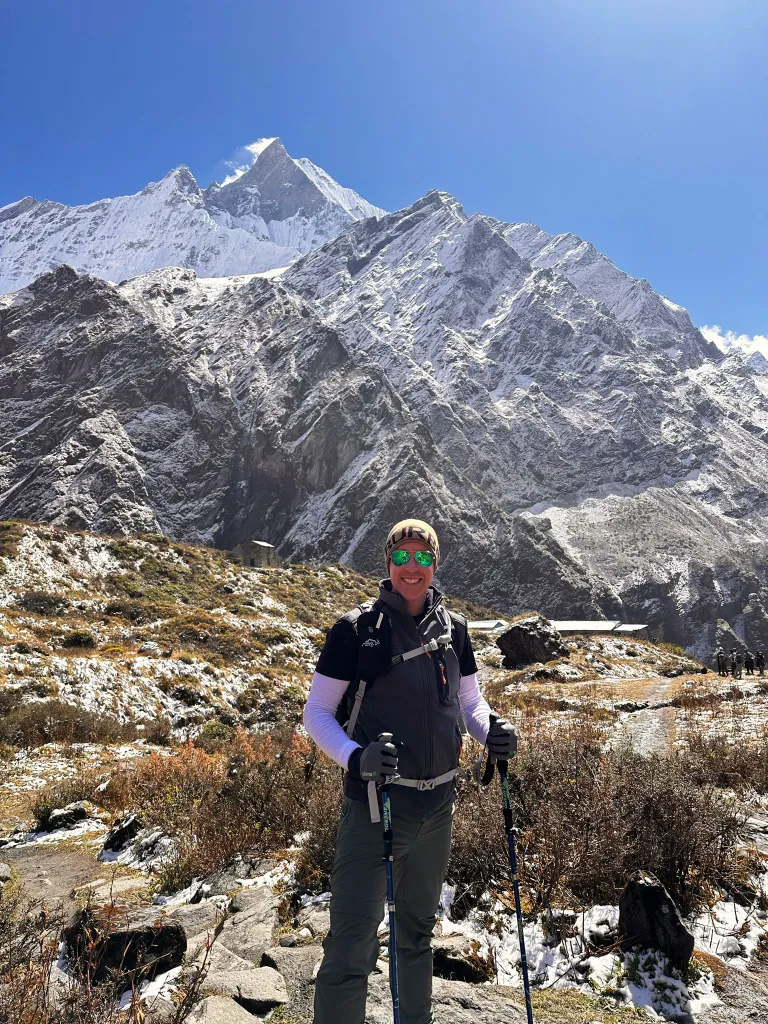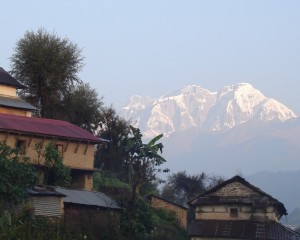What is the Difficulty Level of the Ghorepani Poon Hill Trek?
Ghorepnai Poon hill trek is one of the popular trekking gems of Pokhara, located in the heart of the Annapurna region. The alluring views, cultural richness, and accessible trails make it a favourable trekking experience for everyone.
Additionally, the popularity of the trek comes from its manageable length and rewarding vistas, coming to an end with the sunrise view from Poon Hill. It is often described as one of the most spectacular in Nepal.
But is Ghorepani Poon Hill trek difficult for trekkers? Well, the Ghorepani Poon Hill trek is an easy to moderate trek. Many can do this with proper preparation and understanding of the region's physical landscape. Let us get explore all the physical landscape and the ways to deal with the Ghorepani Poon Hill trek.
Overview of the Ghorepani Poon Hill Trek
The Ghorepani Poon Hill Trek is a popular short trek in the Annapurna region of Nepal. Located in the Annapurna Conservation Area in central Nepal, this trek is considered one of the most straightforward and most accessible in the region.
The best part of the trekking is Poon Hill (3210m), where trekkers can watch the sunrise and enjoy breathtaking views of over a dozen Himalayan peaks, including Dhaulagiri, Annapurna, and Machhapuchhre. Ghorepani Village is a scenic stop at the base of the trail of Poon Hill. This place offers comfortable lodging and local cuisine with the stone houses, rich culture, and hospitality of the Gurung people.
Additionally, the trail passes through lush rhododendron forests, particularly beautiful during the spring bloom (March-May), and showcases a variety of landscapes.
Culturally, the Annapurna region is home to the Gurung and Magar ethnic groups, known for their rich cultural heritage. Trekkers can interact with the locals, learn about their customs and traditions, and stay in traditional homestays. You get to wear their cultural dress, enjoy their cultural meal and stay in the warm nurture of the local people.

How difficult is Ghorepani Poon Hill Trek?
The trail of Poon Hill is easy to moderate depending on the different factors. From landscape to daily walking hours, each of them has an influence on making it easy or moderate for trekkers.
Trek Duration and Daily Walking Hours
The Ghorepani Poon Hill Trek lasts between 8-10 days, depending on the specific route and pace chosen. You can expect to walk for an average of 5-6 hours per day. This moderate duration makes the trek an excellent choice for those looking for a short yet rewarding adventure in the Himalayas.
Altitude Challenges
The highest point of the trek is Poon Hill, standing at 3,210 meters (10,532 feet). While the risk of altitude sickness is relatively low compared to higher-altitude treks, it is still essential to acclimatize properly. Trekkers should take their time to adjust to the elevation, ensuring they remain hydrated and follow a steady pace to reduce the risk of altitude-related issues.
Terrain and Trail Conditions
The trail of the Ghorepani Poon Hill Trek features a mix of stone staircases, forested paths, and occasional muddy sections, especially during the monsoon season. Some segments of the trek, such as the climb to Ulleri, involve steep ascents that can be physically demanding. However, the trek does not require any technical climbing skills or river crossings, which makes it more accessible to a broader range of trekkers.
Fitness Requirements
Unlike the Annapurna Circuit Trek, which is more than 2 weeks journey, Poon Hill Trek is a short trek with a maximum of ten days. A moderate level of fitness is recommended for the Ghorepani Poon Hill Trek. You should be prepared to walk for several hours each day on hilly terrain. Cardiovascular endurance, leg strength, and general stamina are essential to handle the daily trekking demands. Training on stairs can be particularly beneficial for preparing for the uphill and downhill sections of the trek.
Experience Level
The Ghorepani Poon Hill Trek is suitable for both beginners and experienced trekkers. While previous trekking experience is not strictly necessary, it can enhance comfort and confidence on the trail. Whether you are a novice or a seasoned trekker, the Ghorepani Poon Hill Trek offers a fulfilling and picturesque adventure in the heart of the Annapurna region.
Seasonal Factors
The best time to undertake the Ghorepani Poon Hill Trek is during the pre-monsoon (spring) season from March to May and the post-monsoon (autumn) season from September to November. These periods offer stable weather conditions with clear skies and good trail conditions perfect for trekking. During spring, the rhododendron forests are in full bloom, which adds to the trek's scenic beauty. Autumn provides crisp, clear views of the Himalayan peaks and the festival's time without the monsoon rains and winter cold.
Can I trek Ghorepani Poon Hill Trek?
The Ghorepani Poon Hill Trek is designed to be accessible to a wide range of trekkers, including beginners with a moderate level of fitness. As long as you are reasonably fit and prepared for several hours of walking each day on hilly terrain, you should be able to enjoy this trek. It's important to pace yourself, acclimatize properly to the altitude, and follow basic trekking guidelines to ensure a safe and enjoyable experience.
To wrap it up, The journey of the Ghorepani Poon Hill Trek promises unforgettable moments amidst the majestic Himalayan scenery and vibrant local culture. Both seasoned trekkers and a beginner can make this manageable yet rewarding journey through rhododendron forests, picturesque villages, and up to the iconic Poon Hill viewpoint.
To start planning your adventure with confidence and convenience, consider booking your trek with Nepal Vision Treks. Their expertise and local knowledge ensure a well-organized and memorable experience in the Annapurna region.
FAQS






